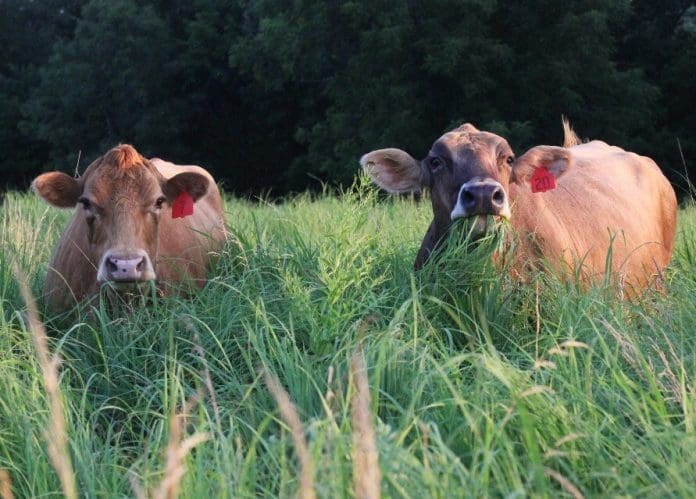
JEFFERSON CITY, Mo. – The Missouri Department of Conservation (MDC) encourages producers to get the most from their grazing operation through the use of native forage.
Native forage simply means a mix of native grasses, such as big bluestem, as well as native legumes and broadleaf plants.
BETTER SUMMER GAINS
For the producers, one of the greatest benefits of using native forages is increased weight gain among livestock during late spring and throughout summer. Most pastures contain introduced cool-season grasses (CSG), and it is a challenge to keep them actively growing during the summer to maintain livestock weight. Native warm-season grasses (NWSG) grow well during summer, and they will improve average daily gain on stocker cattle by one-pound per day compared to tall fescue.
Spring calves on cows will gain 60-80 pounds more on NWSG than on CSG by the end of the summer grazing season. Management of the grazing system with proper stocking rate and rotation is critical.
BETTER SOIL AND WATER CONSERVATION
Another benefit of grazing natives is improved soil health, which increases the diversity of plant roots that occupy the space underground. With proper grazing, levels of organic matter have increased in pasture systems.
From a water-conservation standpoint, deep roots and plenty of soil organic matter mean better water absorption following rain events. And in a state where farmers and ranchers can experience both flood and drought in the same year, native forage can help keep rainwater where it falls. In turn, deep-rooted native forage will stay in good condition longer if drought conditions occur later on.
Roots of many native forages grow 6-10 feet deep, or more, depending on soil depth.
“During the heat of summer, native forages can withstand longer period of drought compared to the short-rooted, cool-season grasses,” explained MDC Agriculture Liaison Greg Collier. “When planted together, native forages develop enhanced root systems that allows them to do well with limited inputs, such as water and nutrients.”
Once established, native pastures can produce 4-5 tons of high-quality forage during the hottest, driest months of the year.
BENEFITS FOR NATIVE WILDLIFE
NWSG have tremendous benefits to native wildlife, like bobwhite quail, migrating monarch butterflies, and other pollinators. The diversity of plants that native forages provide in a pasture system will provide a diversity of plant height that offers a greater variety of wildlife cover.
“Native forages benefit Missouri’s wildlife throughout the year,” said Collier. “They can provide better places for birds to nest and raise chicks, and during the fall and winter, plant growth left in pastures will provide cover for a variety of wildlife, including a place for deer to bed. This same pasture can also provide cover for upland game, such as bobwhite quail or cottontail rabbits.”
READY TO GET STARTED?
For help incorporating native grasses into your operation, reach out to one or more of the following:
MDC Private Land Conservationist: http://mdc.mo.gov/contact-engage/regional-offices
USDA Natural Resources Conservation Service: http://nrcs.usda.gov/wps/portal/nrcs/mo/contact/local/
University of Missouri Extension: http://extension.missouri.edu/programs/native-grass-project
Quail Forever: http://missouripfqf.org/contact














